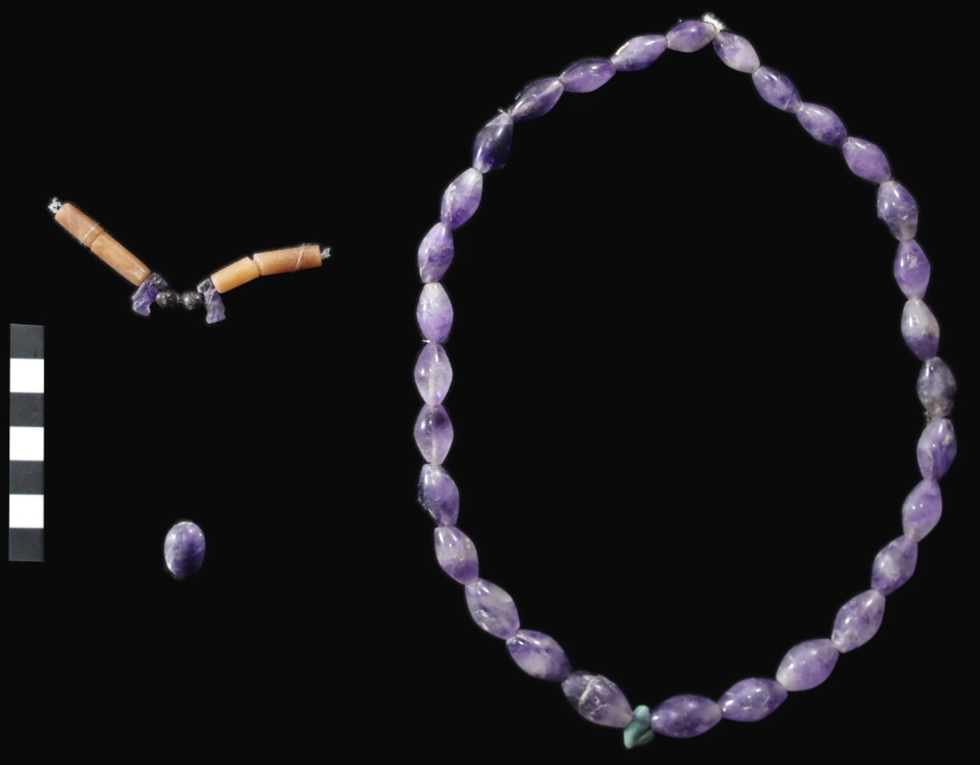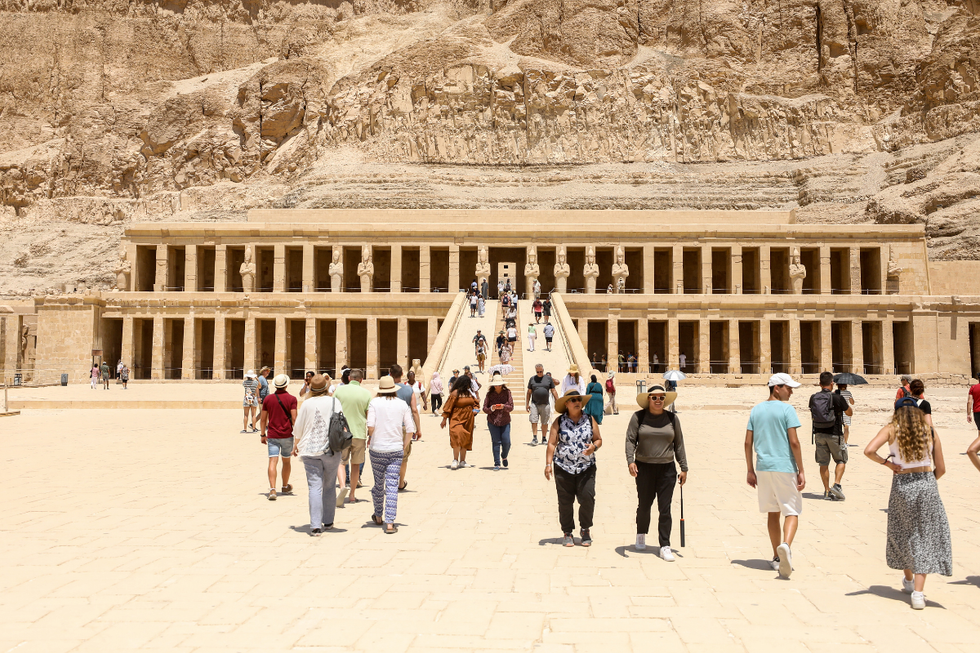Archaeology breakthrough: Scientists shocked as they unearth new ancient Egyptian tomb
The archaeologists discovered numerous pieces of jewellery across female and male tombs alike
Don't Miss
Most Read
Trending on GB News
Scientists were left shocked as they unearthed a new ancient Egyptian tomb - with an astounding 11 sealed burials - on the outskirts of Luxor.
Working together on the South Asasif Conservation Project, American and Egyptian research teams made the discovery in the South Asaif necropolis, which is located next to the Temple of Hatshepsut along the River Nile's West Bank.
Egypt’s Tourism and Antiquities Ministry have confirmed that the tomb dates back to the Middle Kingdom (between 1938 BC and 1630 BC).
Further excavation of the necropolis found coffins belonging to numerous men, women and children - which suggests that it was a family tomb used to bury several generations of an ancestral tree across a few centuries.

A finely crafted necklace was discovered with a total of 30 amethyst beads, as well as two agate beads which framed a hippo-head amulet
South Asasif Conservation Project
Secretary General of the Supreme Council of Antiquities in Egypt Mohamed Ismail Khaled has confirmed that ancient floods destroyed most of the smaller artefacts within the tombs, including wooden coffins and linen wrappings suffering from water damage.
However, the archaeologists found pieces of jewellery, including necklaces, armlets, bracelets, scarab rings, and girdles made from amethyst stone.
Additionally, a finely crafted necklace was discovered with a total of 30 amethyst beads, as well as two agate beads which framed a hippo-head amulet, according to the Supreme Council of Antiquities.
Chief American archaeologist Catherine Blakeney explained that the team had found two copper mirrors, one with a handle shaped into a lotus flower and the other emblazoned with a design of Hathor - known as the sky goddess, reigning over women, fertility and love.
LATEST ARCHAEOLOGICAL FINDS:
All but one piece of jewellery was discovered among the female tombs, with one item belonging to one male tomb
The find has become a topic of fascination by the scientists as they try to explain the anomaly, which suggests the deceased had a level of seniority within the family.
Nearby, the impressive Temple of Hatshepsut was built during Pharaoh Hatshepsut's reign - the 18th Dynasty - and is widely thought to be a masterpiece of ancient architecture.
Inside the Temple, there is a shrine dedicated to the Egyptian goddess Hathor, one of the most popular, powerful goddesses in the religion.

Nearby the archaeological discovery, the impressive Temple of Hatshepsut was built during Pharaoh Hatshepsut's reign - the 18th Dynasty - and is widely thought to be a masterpiece of ancient architecture (Stock)
GETTY
She represented numerous aspects of life, from love, beauty and music to fertility, dancing and the sky.
While she was deemed the protector of Egyptian women, men also worshipped her, welcoming priests as well as priestesses in her temples.
As the deity of beauty, wearing make-up was often seen as a sign of reverence towards her.
Consequently, such ornamental jewellery and cosmetic objects were sometimes adorned with a reference to the goddess, such as those newly discovered objects near Luxor.







